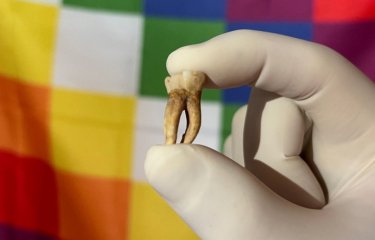Cause
The infectious agent responsible for leprosy is the Mycobacterium leprae bacterium. It seems to be spread by nasal droplets during close and frequent contact with infected and untreated individuals.
Symptoms
The leprosy bacillus multiplies very slowly. The incubation period for the disease is 5 years on average, but sometimes symptoms only appear after 20 years. The disease causes skin lesions and nerve damage. Without treatment, these lesions develop and become permanent, affecting the skin, nerves, limbs and eyes. There are two types of leprosy – paucibacillary (one to five anesthetic skin lesions) and multibacillary (more than five anesthetic skin lesions).
Epidemiology
The first known written record of this disease dates back to 600 BC. Already present in ancient civilizations in China, Egypt and India, it has always been an affliction marked by stigmatization and exclusion.
Since the 1980s, close to 16 million leprosy patients have received treatment, and leprosy has been eliminated in 108 of the 122 countries where it was considered a public health problem by the World Health Organization (WHO). The introduction of multi-drug therapy (see "Treatment" section below) has led to a significant fall in the prevalence of the disease. The number of leprosy cases has gone from 5.4 million in the mid-1980s to a few hundred thousand today (source: WHO Weekly Epidemiological Record – September 2016).
In 2019, according to WHO, 202,256 new cases of leprosy were recorded worldwide, based on official figures from 161 countries.
But leprosy remains a major problem in 14 countries in Africa, Asia and Latin America. WHO figures show that in 2015 three countries accounted for 80% of new cases worldwide: India (60%), Brazil (13%) and Indonesia (8%). Leprosy remains endemic in many other countries, including Angola, Madagascar, Central African Republic and Tanzania.
Given the incubation period of the infection, which lasts several years, asymptomatic carriers of Mycobacterium leprae can spread the disease, which makes it difficult to eradicate on a global scale.
In 2016 WHO launched its Global Leprosy Strategy 2016-2020 – Accelerating towards a leprosy-free world with the aim of boosting efforts to fight leprosy and preventing disabilities, particularly in children affected by the disease in endemic countries. This strategy was continued in 2021 with the Global Leprosy Strategy 2021–2030 “Towards zero leprosy”.
Treatment
The treatment recommended by WHO since 1981 cures patients and, if administered early enough, prevents disabilities. It is a multi-drug therapy (MDT) which involves administering three antibiotics (dapsone, rifampicin and clofazimine). Paucibacillary leprosy can be cured in 6 months and multibacillary leprosy in 12 months. In addition, patients are no longer infectious when they have taken an initial dose of MDT, and their ability to transmit leprosy is therefore halted. No bacillus resistance to MDT has yet been reported, although in the 1960s, resistance to dapsone – the only antileprosy drug available at the time – was observed.
June 2021



